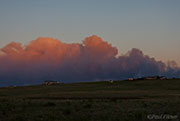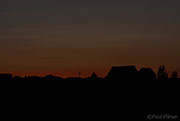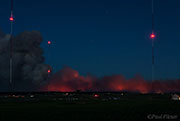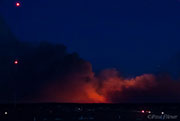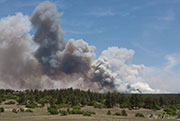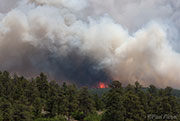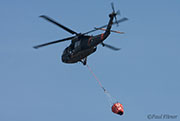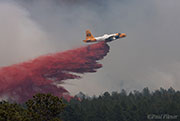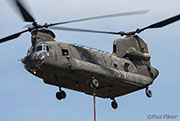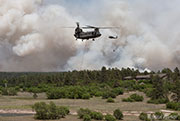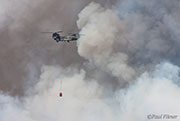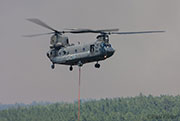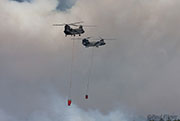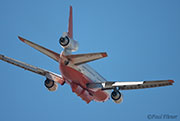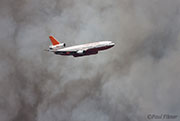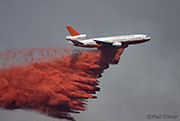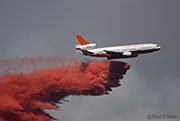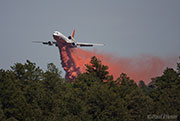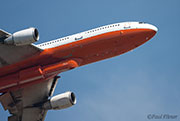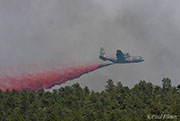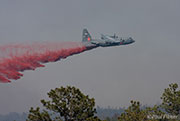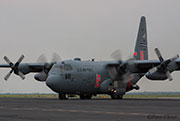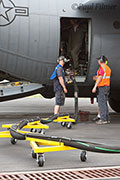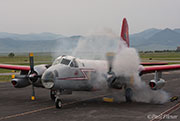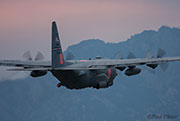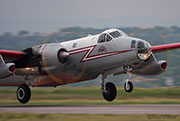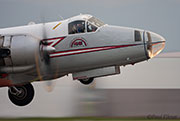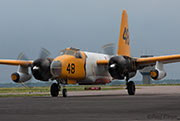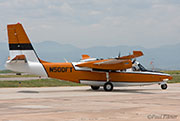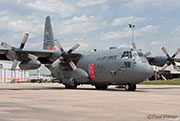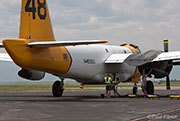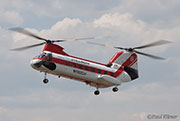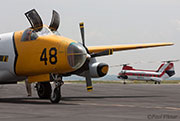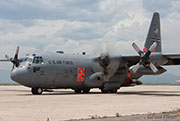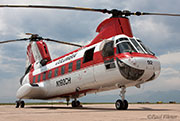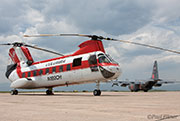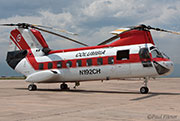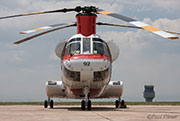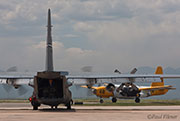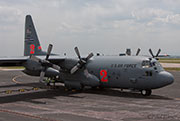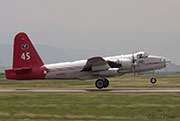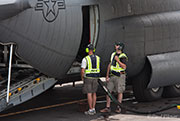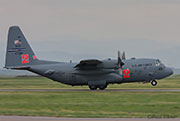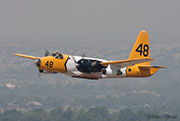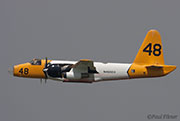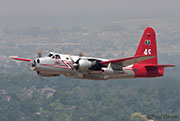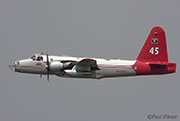On 11 June the Black Forest Fire started to the north east of Colorado Springs, and during the first day grew so rapidly that the Colorado Governor, John Hickenlooper, ordered the Colorado Army National Guard (CO ARNG) to deploy from Buckley AFB, to the north, and Fort Carson, very close to the fire in the south.
CH-47 and UH-60 helicopters were used carrying Bambi Buckets and for that first day they were the only air assets that dropped on the fire.
At the end of that first day the Governor also activated the MAFFS assets, based at Peterson AFB and operated by the 302nd Airlift Wing in Colorado Springs, flying the C-130.
The smoke from this fire quickly travelled north and made visibility tricky all through the Denver Metro area and as far north as Boulder.
The fire continued to grow on the second day, fanned by strong winds, and the lines built by fire fighters on the ground were breached.
The CO ARNG continued to support using more CH-47 and UH-60s, with the addition of a UH-72 in a co-ordination and search and rescue role.
It was difficult to get anywhere close to where the helicopters were dropping, but I settled for a spot on a small road that was slightly elevated, although it was at least a couple of miles away. Numerous TV crews also sussed out this spot and joined me later.
By noon there was still no sign of any tanker support until finally an Air Attack Aero Commander appeared on scene. I knew that finally my waiting might pay off.
Not long after, one of the Lead Beech 90s appeared and the familiar rumble of Minden's P2V Neptune, Tanker 48, droned over us.
Within a few minutes they were both lined up parallel to us, and the combination of distance, a long lens (500mm), and the heat from the ground plus the low height of the aircraft, made for a disappointingly heat-hazed shot.
Tanker 48 was ordered to reload and return, and just after this one of the CH-47s decided to dip in a lake right in front of us. This would be the only dip that would be close to us however.
I knew that the 10 Tanker Air Carrier's DC-10 was on the ground in Pueblo, CO, and it had dropped on the Royal Gorge Fire near to Canyon City the day before, its first drop in Colorado. Tanker 911 was given a five-year contract by the Forest Service this year.
Over the radio I heard the lead aircraft call that the DC-10 had been ordered and was on its way, something that I'd never even seen, let alone shot before.
Thirty minutes later the DC-10 came low over the horizon and joined up with the Lead plane.
After three or four practice runs, which included flying low over our location in full-flap configuration, he lined up for the drop proper.
The DC-10 certainly drops from a higher altitude than the large tankers we're used to seeing, and on that run he dropped half his load. While this was happening the helicopters hovered to keep out of the area.
The second run was almost towards our location, but quite a lot further way. I was impressed with how slow the DC-10 flew. That was the only drop for the DC-10 on that day.
The next aircraft to arrive was MAFFS 5, which dropped in the same place as the other two, most likely extending a retardant line, quickly followed by MAFFS 2.
After these drops we were all told to leave the area, as the road we were on had become part of the mandatory evacuation area, due to the shifting winds.
I decided to do the rest of my shooting for the day from the Jeffco Tanker Base, where Neptune Aviation's P2V, Tanker 45, had also joined the team.
The two MAFFS C-130s were also loading from here.
The following day a Columbia Helicopters Boeing Vertol 107 (CH-46) arrived, a type we hardly ever see this far to the east. I'm not sure if they went to the fire or were deployed elsewhere later, but they had departed by the next day.
On 21 June the Black Forest Fire was reported 100% contained, but it has become Colorado's most destructive fire in our history. 14,280 acres burned, 502 structures destroyed, 18 structures damaged and two fatalities. Also the authorities have ruled out natural causes, so the source or the fire is now a crime scene.
Aviation statistics for the fire, just from the Jeffco Tanker Base, included 63,452 gallons of retardant dropped over 26 sorties. The tankers flew 26.58 hours and total hours, including three Air Attack and two Lead Aircraft came to 90.42 hours.
Subscribe to receive updates via: e-mail list | Facebook | Instragram | Twitter
[photo/serial list]
